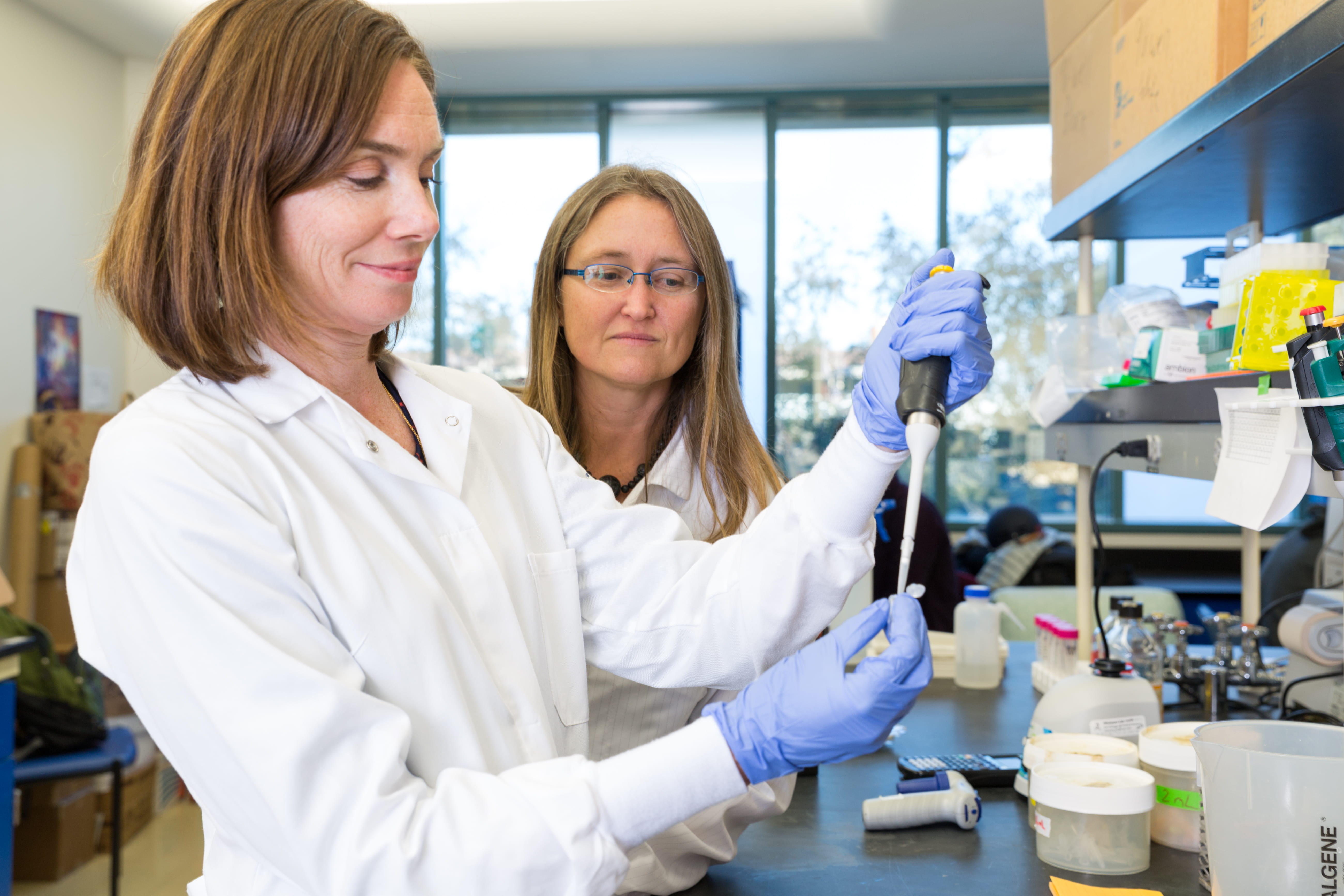Technology improves cancer treatment at UCI
Recent additions at UC Irvine’s Chao Family Comprehensive Cancer Center decrease patients’ radiation exposure, increase their comfort.

Minimizing a cancer patient’s radiation exposure during diagnostic scanning and treatment is a continuing goal in oncology. As the recent debate over mammograms shows, physicians struggle with the issue of radiation exposure even in preventive procedures.
Since January, UC Irvine’s Chao Family Comprehensive Cancer Center has used an innovative radiotherapy technology that offers distinct advantages over traditional radiation treatments, including less exposure. In addition, the cancer center has installed an imaging suite that gives patients control over their environment and reduces their anxiety during lengthy diagnostic scans.
In conventional radiotherapy, a tumor is targeted by one or more fixed beams, and treatment may require passes of as many as 10 beams over 10 to 30 minutes. With Varian Medical Systems’ RapidArc, the equipment rotates around a patient, administering precise amounts of radiation to the tumor in a single sweep that minimizes exposure of surrounding tissue.
“The major advantage is that it treats the whole tumor with one 360-degree rotation,” says Dr. Nilam Ramsinghani, chair of UCI’s Department of Radiation Oncology. “What used to take 10 minutes now takes less than two minutes.”
The difference can be crucial, she says. “For example, patients with head and neck cancers sometimes have compromised breathing and swallowing, and that makes it difficult – if not impossible – for them to lie on their back for the 10 to 30 minutes needed to deliver the standard radiation treatment,” Ramsinghani says.
But before a patient is treated, a radiation oncologist must obtain a highly detailed computerized tomography scan of the tumor and surrounding tissue in three dimensions. This is used to design the treatment plan, which may include surgery, chemotherapy, radiation or a combination of therapies. Many cancers require repeated imaging to ensure that the treatment is reaching the tumor and leaving healthy tissue undamaged.
CT scanning requires that the subject lie perfectly still on a hard gurney for as long as 40 minutes. This can be unpleasant for patients who are claustrophobic, anxious or in pain. “When we began planning to replace our CT scanner, we wanted to find a way to ease the experience,” says Edward Orlowski, chief radiation therapist at the Chao Family Comprehensive Cancer Center.
What they found is the Ambient Experience CT suite, developed by Philips Healthcare. The glaring lights are gone, and the daunting medical equipment is hidden. The room’s curved white walls are softly lit along the ceiling, and the lack of hard edges and corners may diminish claustrophobia.
Patients control the lighting and can choose from numerous shades of blue, pink, red, yellow, etc. Images projected onto the CT suite’s ceiling and walls include: a South American beach scene in which a coconut drops from a palm tree while clouds drift past; a sun-washed African sky that transforms into twilight, complete with twinkling stars and darting fireflies; and the Australian outback, with the occasional kangaroo hopping by.
Minimizing discomfort and reducing anxiety are no small concerns. Orlowski says some patients must be rescanned because they couldn’t hold still long enough to complete the imaging, while others have to be sedated prior to scanning. “The Ambient Experience CT suite offers patients, particularly children, some control in a situation where they typically have none,” he says.
Physicians at the other end of the cancer center recently shared their experiences using RapidArc with colleagues at the American Society for Radiation Oncology’s annual meeting.
“We found that with RapidArc we can conduct treatments much more quickly, with about 76 percent less ‘beam on’ time, and possibly limit unintended and undesired radiation exposure for patients,” reported Dr. Daniel Schiffner, chief resident in UCI’s radiation oncology department.
The faster the radiotherapy, the lower the risk of a patient – and tumor – shifting position in the course of it, jeopardizing healthy tissue and organs, he said: “Less ‘beam on’ time improves patient comfort and reduces the potential for movement during a treatment session. This allows more accurate dose targeting.”
Schiffner and UCI’s radiation physics team compared this technology with methods utilizing fixed beam angles to deliver radiation for eight cancer patients, some with multiple tumors. They found that the RapidArc treatments conformed to the shape and size of targeted tumors at least as well as traditional fixed-beam approaches. However, RapidArc therapy was significantly quicker and achieved with fewer radiation doses, decreasing patients’ exposure.
The Chao Family Comprehensive Cancer Center, one of only 40 National Cancer Institute-designated comprehensive cancer centers in the U.S., is the first cancer center in Orange County to use the RapidArc system and is among the first in the nation to install the Ambient Experience CT suite.

